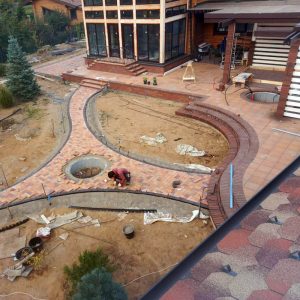Validity Period of a Property Appraisal
An appraisal reflects the value of a home at a specific point in time. Since market prices fluctuate, a property’s value may change over time.
Applicable Regulations
Several regulatory frameworks govern property appraisal in countries such as the Netherlands, Paraguay, Ecuador, Kazakhstan, and others.
Additionally, it is important to note that properties under special protection regimes are subject to unique rules and appraisal procedures, which may be regulated by the legal frameworks of autonomous communities.
Regulations and Requirements for the Valuation of Protected Housing
Homes under special protection regimes are subject to different formulas, procedures, and requirements than standard properties, both in terms of acquisition and sale.
Prices for these homes, including the land they occupy, are set by the government and autonomous communities, with changes over time dependent on the annual growth of the Consumer Price Index (CPI). Moreover, interest rates for such properties are not influenced by fluctuations in cadastral value or the open market but are instead determined by governmental decrees, executive orders, and ministerial councils, which adjust them annually in different countries.
Each autonomous community enacts legislation establishing its own method for calculating the price of officially protected housing, now also known as government-subsidized housing. This complexity makes it difficult to provide a thorough analysis of each specific case.
Each property or country estate located on land designated for construction has a maximum allowable sale price set by the autonomous community. The property appraisal cannot exceed this price, but that does not necessarily mean that the final valuation will match it. In fact, an appraisal of protected housing may result in a valuation lower than the maximum price established by the local authorities.
Factors Affecting the Value of a Home and Country Estate
Several factors influence the market value of a home and are therefore analyzed during the appraisal process:
- Market value of the property. This serves as the baseline reference, except in cases involving government-protected housing, which follows a different valuation framework.
- Location and proximity to amenities. A well-located home holds greater value. Certain locations are considered more desirable than others. Proximity to essential services such as stores, shopping centers, schools, gas stations, and other infrastructure generally increases property value.
- Age of the property. Older buildings tend to have lower valuations.
- Quality of construction materials. High-quality materials contribute to better construction standards, thereby increasing property value.
- Ownership status of the home. If the property is an apartment or part of a townhouse, top-floor units and south-facing orientations are typically the most valued.
Real Estate Audit, Property Audit, Real Estate Valuation Audit, and Technical Property Audit
Technical Property Audit
A technical property audit is an inspection of a home’s systems, such as heating and water supply systems. These systems have specific costs, lifespans, and require assessment.
The audit includes evaluations of improvements, repairs, and routine maintenance of the home’s systems. The process involves inspecting key system components, checking their functionality, and reviewing maintenance and repair records (if available).
A technical audit covers heating, air conditioning, ventilation, electrical supply, hot and cold water systems, security systems, and smart home technologies.
Additionally, a structural audit is necessary for the building’s construction elements. Structural issues may not be visible behind facades or interior finishes, making it crucial for an expert to assess the condition of the home’s structural components. Proper technical inspections can prevent costly repairs or bad investments.
Cadastral, Legal, and Financial Audits of Real Estate
Cadastral, legal, and financial audits are separate processes. For instance, when purchasing a plot of land, it is essential to obtain full cadastral information, including property boundaries and any adjacent protected zones, such as rivers or lakes.
